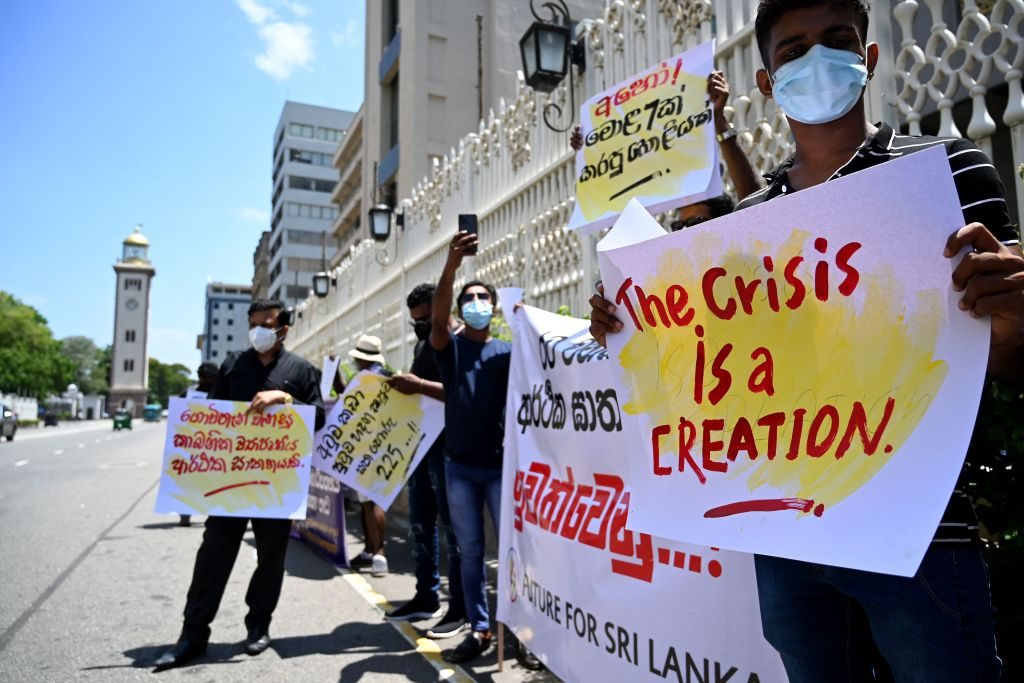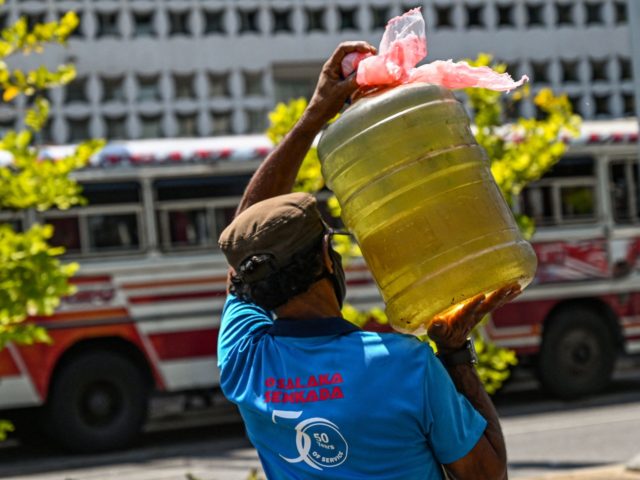Anti-government protests have been “widespread” across Sri Lanka for the past month due to the island nation’s worsening financial crisis, which has seen Sri Lankans go without sufficient food, fuel, and medicine for weeks, India’s the Week magazine reported this week for its April 3 issue.
Protests against the administration of Sri Lankan President Gotabaya Rajapaksa took place on March 7 in Sri Lanka’s administrative capital of Sri Jayawardenepura Kotte. The Week sent a reporter to the city to witness the protests and interview participants of the demonstrations.
Detailing the event, the magazine wrote:
[Dilanta] Weerasekara recently went to Sri Lanka’s administrative capital, Sri Jayawardenepura Kotte, to take part in a protest against the Gotabaya Rajapaksa government. “It took place on March 6 and 7. I went there both days,” he said. “It will at least show our problems to those who live in luxury bungalows.”
On March 7, people in the capital were seen holding placards saying, “Enough of corruption”, “Gotabaya go home” and “Why have you made us beggars?” Udhitha Deshapriya, a civil engineer, said Sri Lankans had been suffering for a long time. “There has to be a solution. I am here to register my protest,” he said. Rajitha Gunasekara, a banker who lost his job recently, said the incumbent government should go. “Do we actually need a government that makes us live like beggars?” he asked.
Sky News also reported on March 29 that Sri Lanka’s economic crisis “has sparked protests across the country.”
“Since the beginning of March, the Sri Lankan rupee has fallen by almost 45% against the US dollar and its foreign exchange reserves have fallen to crisis levels,” the British news outlet observed.

People queue to buy diesel at a Ceylon Petroleum Corporation fuel station in Colombo on March 29, 2022. (ISHARA S. KODIKARA/AFP via Getty)
Sri Lanka’s financial woes center upon a shortage of foreign currency. The tropical island nation of Sri Lanka, located off the southernmost tip of the Indian subcontinent, has traditionally relied almost entirely upon its tourism sector and remittances by Sri Lankan laborers abroad to fuel its import-dependent economy. The Chinese coronavirus pandemic has all but decimated the amount of foreign currency entering Sri Lanka over the past two years and left Sri Lankan traders unable to pay for imports.
Sri Lanka’s nearly total dependency on imports means the island has suffered from extreme levels of essential good shortages over the past month as the nation essentially ran out of foreign currency reserves.
“In February, essential food inflation rose by 25% and overall inflation is close to 18%, while people have been forced to queue for hours to buy fuel, amid rocketing prices,” Sky News reported on Tuesday.
“Since the beginning of March, the Sri Lankan rupee has fallen by almost 45% against the US dollar and its foreign exchange reserves have fallen to crisis levels,” according to the news site.

Federation of Sinhala Organization activists protest against rising living costs outside the Central Bank of Sri Lanka front office in Colombo on March 30, 2022. (ISHARA S. KODIKARA/AFP via Getty Images)
“People in many parts of the country had to wait in queues [on March 28] to purchase essential food items provided at concessionary prices by the Sathosa,” the Sri Lankan news website News 1st reported on March 29. Sathosa is a Sri Lankan state-owned retail business.
“People in Chunnakam, Jaffna had been waiting in line for hours on Monday (28) to get the relevant essential items,” according to the news outlet.
News 1st further revealed that Sri Lankans nationwide had their power supplies cut off for as long as seven hours at a time on March 29 due to the state’s need to ration energy during its financial crisis.
Sri Lanka’s fuel shortages, which made international headlines last week for allegedly causing some frustrated Sri Lankans to attack and even murder each other, continued on March 29 according to News 1st.
“People gathered at the Polwatta Stadium in Ambalangoda on Tuesday (29) morning to obtain gas,” the news website relayed.
Sri Lanka’s Peradeniya Teaching Hospital was forced to order a temporary suspension of all non-emergency surgeries from March 28 to March 29 to conserve its dwindling supply of medicines.

COMMENTS
Please let us know if you're having issues with commenting.